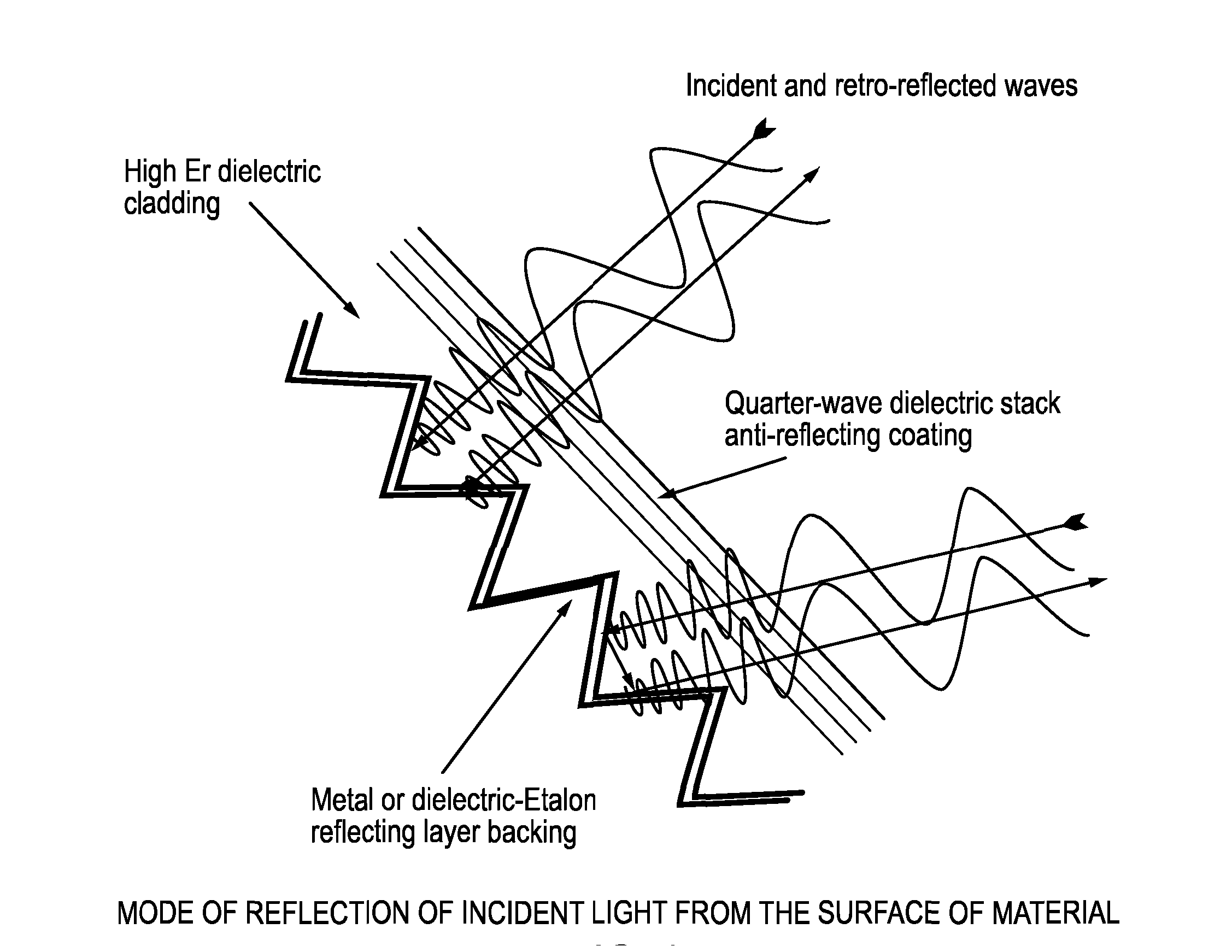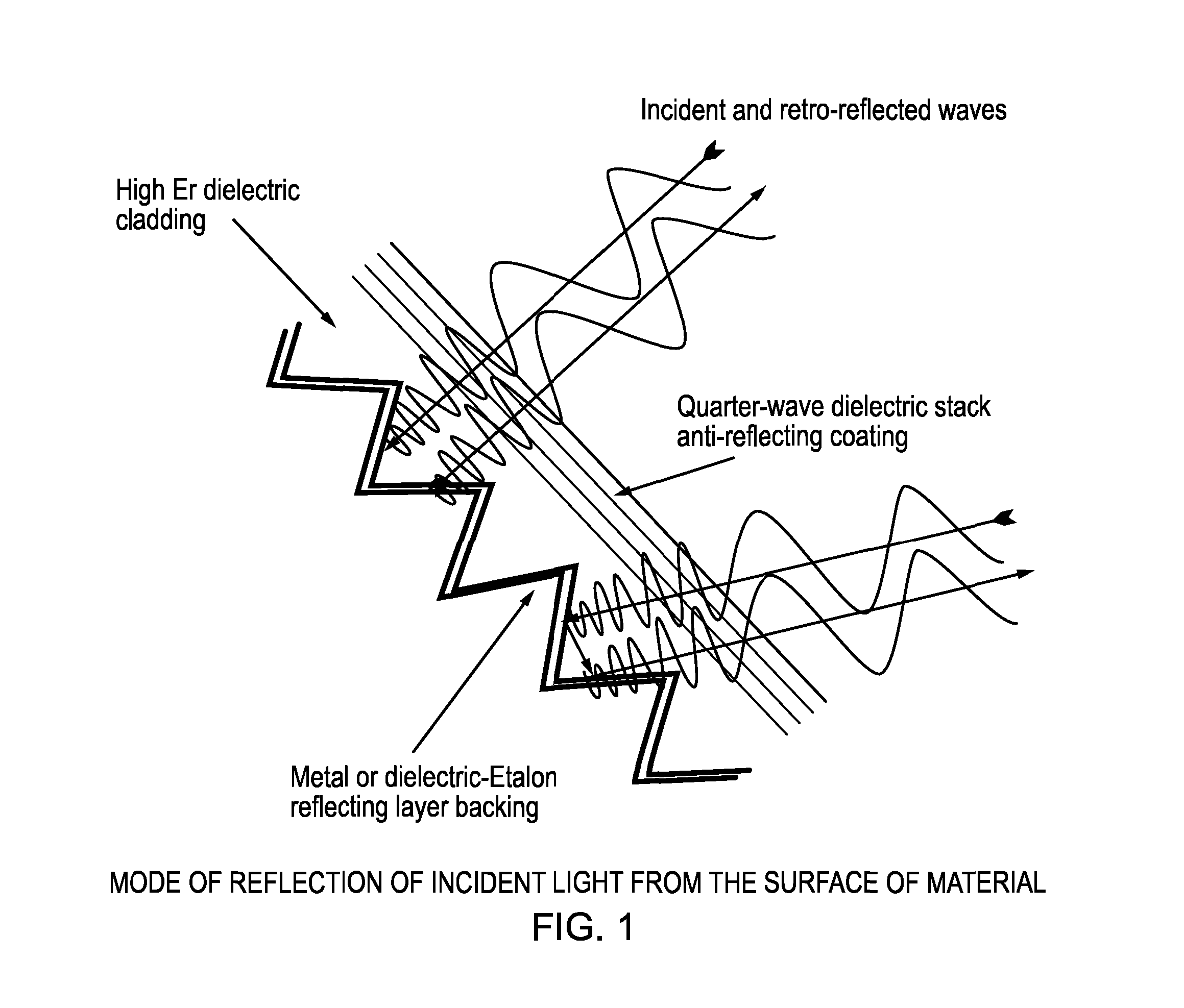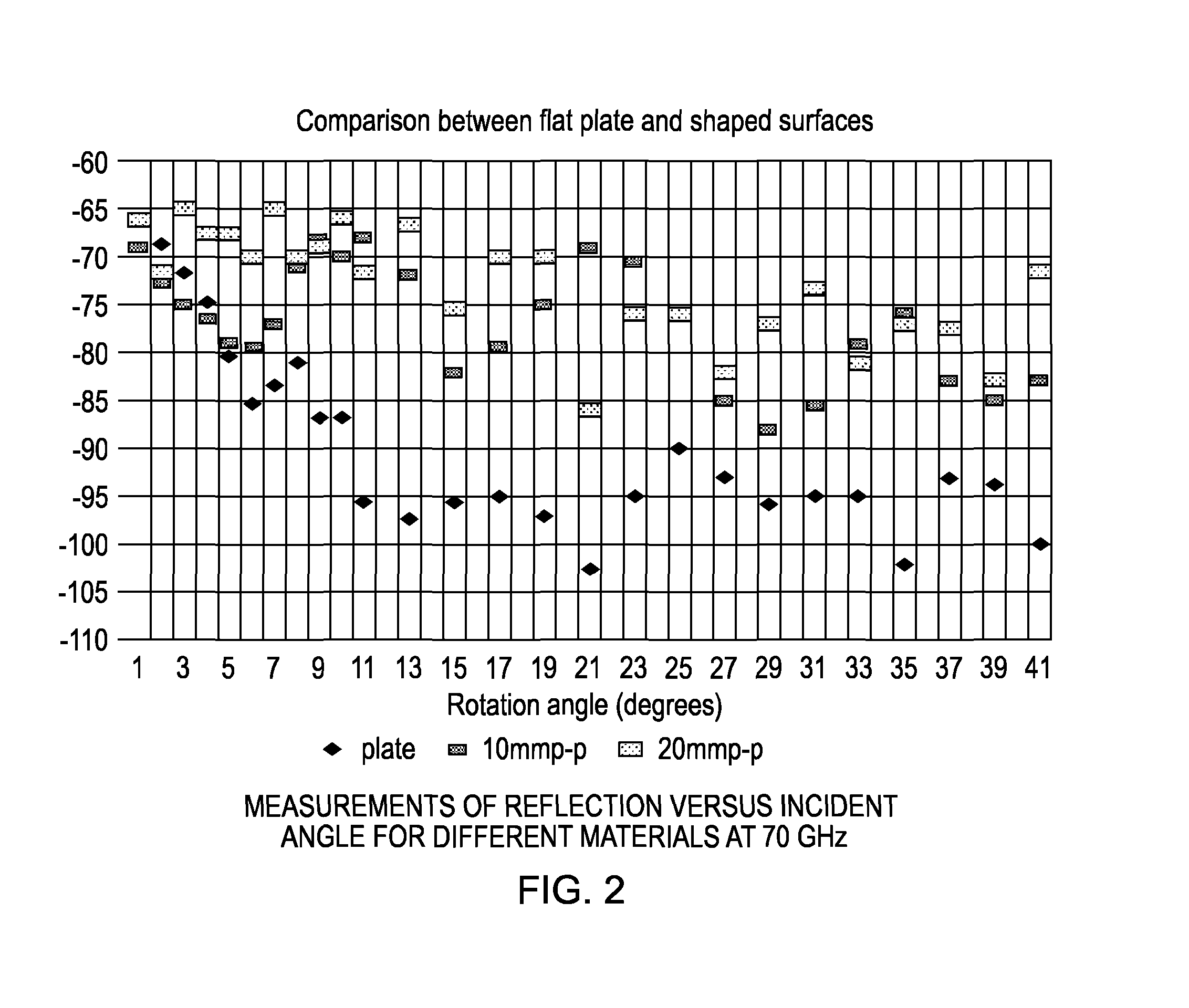Reflective Substrate
a technology of reflective substrate and reflective surface, applied in the direction of instruments, anti-theft devices, protective garments, etc., can solve the problems of impossible search and rescue by foot, achieve the effect of increasing the reflected radar return, reducing the number and severity of road traffic accidents, and increasing the visibility to radar
- Summary
- Abstract
- Description
- Claims
- Application Information
AI Technical Summary
Benefits of technology
Problems solved by technology
Method used
Image
Examples
Embodiment Construction
[0061]The present invention is established on the premise that, by using a specially sculptured surface, a very large proportion of any microwave or millimetre wave radar generated radiation signal which illuminates an object, or is incident on an object, comprising the reflective material according to the invention will be returned by retro-reflection to the illuminating radar. The invention also requires that such a material should give a strong retro-reflection response to these millimetre wave and microwave radars, whilst not compromising the appearance or function of substrates, specifically textile garments, with which it is associated. Specifically, it is intended that the material according to the invention should be incorporated unobtrusively within the lining of the garment.
[0062]The basic principle of operation, in particular the discrimination between the engineered reflector and the reflection from the surroundings, can be further improved for specific applications by p...
PUM
 Login to View More
Login to View More Abstract
Description
Claims
Application Information
 Login to View More
Login to View More - R&D
- Intellectual Property
- Life Sciences
- Materials
- Tech Scout
- Unparalleled Data Quality
- Higher Quality Content
- 60% Fewer Hallucinations
Browse by: Latest US Patents, China's latest patents, Technical Efficacy Thesaurus, Application Domain, Technology Topic, Popular Technical Reports.
© 2025 PatSnap. All rights reserved.Legal|Privacy policy|Modern Slavery Act Transparency Statement|Sitemap|About US| Contact US: help@patsnap.com



